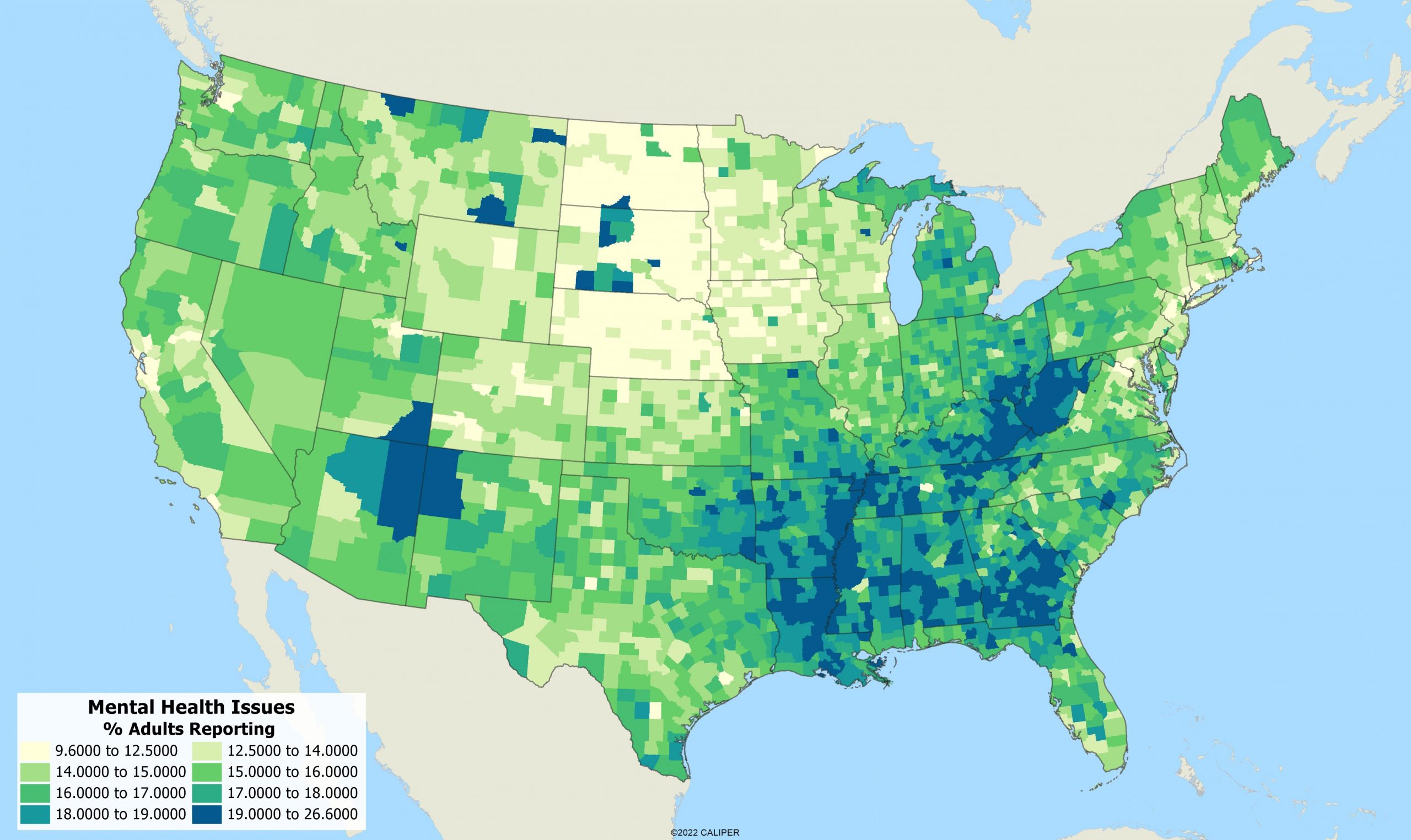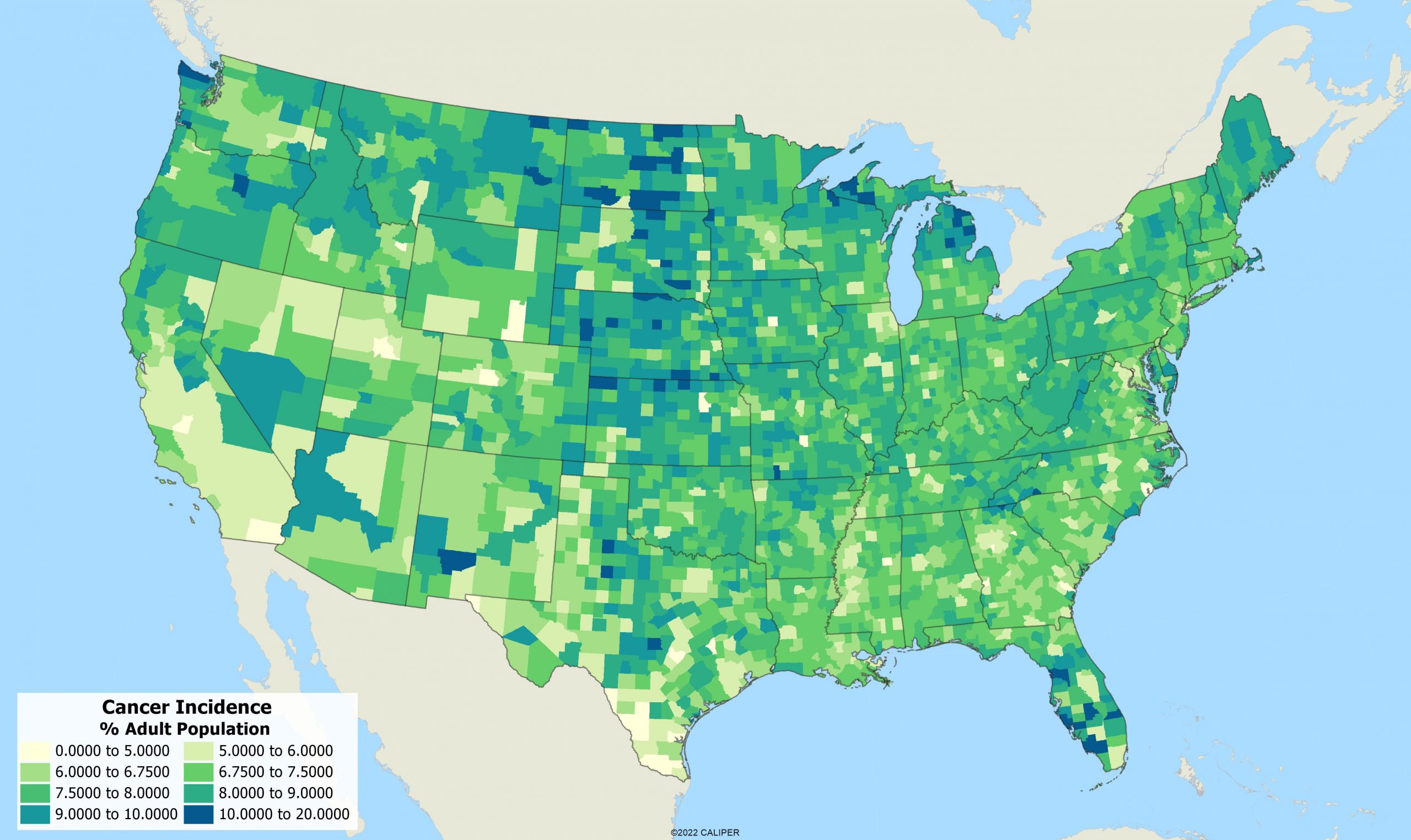For many years now, we have carried healthcare data relating to estimates of expected case loads by condition, mostly used by hospitals and insurance companies. However, this leaves a gap for those suffering from chronic diseases and the various lifestyle habits that can lead to these chronic diseases. Our new database, Chronic Disease and Health Risk Factors fills this gap and can be helpful for economic development, retailing, research, and hospital facility planning and development. We mapped three different variables so that you can see the data visually.
One of the most important risk factors are mental health issues. As you can see on the map below, this is very clearly a serious problem in the rural south, Appalachia, and the native reservations of Oklahoma and four corners region. Overall, the best mental health is in the rural upper Midwest. Those suffering from mental health issues are less likely to care for themselves in many ways, such as exercise, diet and overall grooming behaviors, which can lead to declines in physical health.

Mental Health Issues by County
Asthma has been a major topic of the last few years, especially in correlation to Covid-19 preexisting conditions. This is an example of a chronic disease that can lead to additional health problems if left untreated or in combination with other diseases. Mapped on a county level below, you can see the percentage of the adult population with asthma. When we look at the map, we also note that the areas with high percentages of adults with asthma are often areas with low income.

Asthma Incidence by County
Finally, we mapped the cancer incidence rate on the county level. Cancer is typically a disease that effects the elderly, and you can see that on the map below as we think about the demographics of each area.

Cancer Incidence by County
Chronic Disease and Health Risk Factors is available now as a part of the 2022B release.


Recent Comments